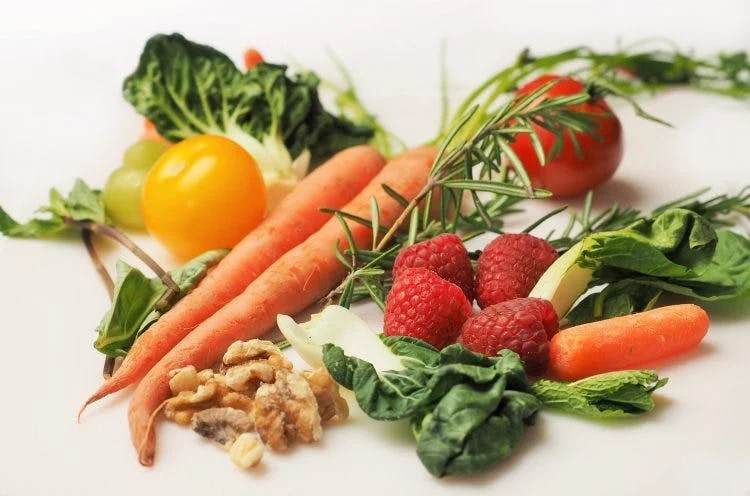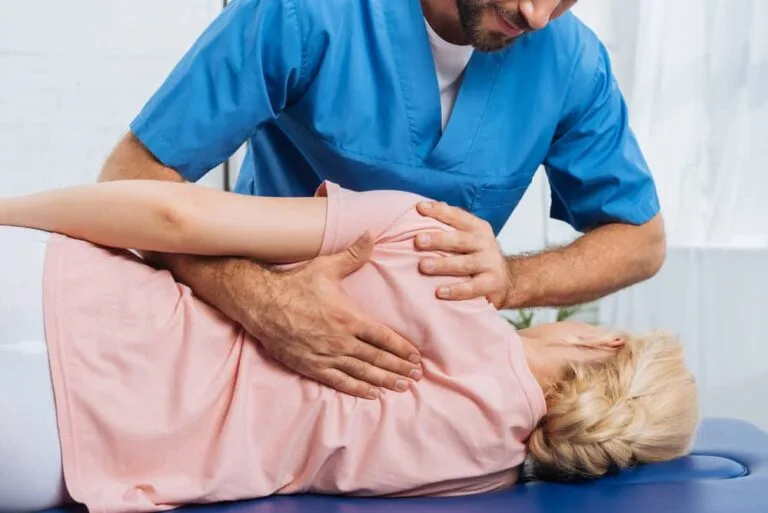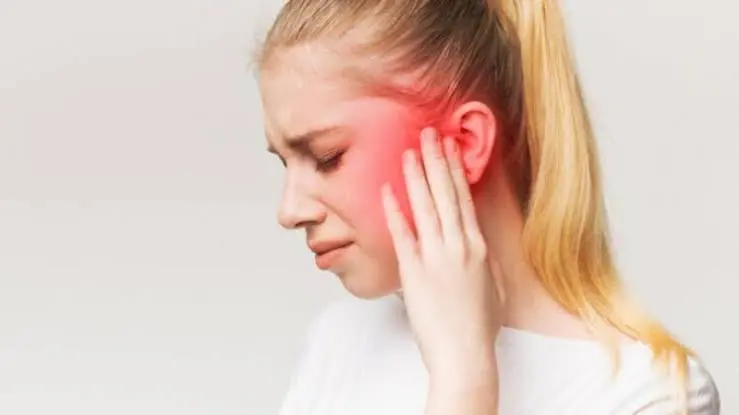Best Foods for Stroke Recovery and Prevention
A stroke is a medical emergency that occurs when blood flow to the brain is interrupted or reduced, leading to damage to brain cells. It is a critical condition that requires immediate attention and proper medical care.
Nutrition plays a crucial role in the recovery and prevention of strokes. Choosing the right foods can contribute to overall well-being and support the rehabilitation process.
In this guide, we will explore the best foods for stroke recovery, focusing on a diet that promotes heart health, reduces inflammation, and provides essential nutrients to support brain function.
A well-balanced and nutrient-rich diet can play a pivotal role in enhancing the recovery and quality of life for individuals who have experienced a stroke.
Table of Contents
Introduction
When some of the brain’s blood supply is cut off or interrupted, the brain’s tissue becomes deficient in oxygen and nutrients, which can lead to a stroke. This can damage or kill brain cells, resulting in a variety of symptoms, including paralysis, numbness, vision problems, and difficulty speaking.
A healthy diet is important for everyone, but it is especially important for people who have had a stroke or are at risk of stroke. A healthy diet can help to:
- Reduce the risk of another stroke
- Improve recovery from a stroke
- Promote overall health and well-being
Creating a diet rich in brain-healthy foods can be made less difficult if you are aware of the best foods for stroke recovery. We’ve put together a list of foods that are beneficial for stroke patients and have been clinically proven to offer a range of advantages. The list also includes a lot of fruits because they are excellent sources of flavonoids and antioxidants, both of which aid in the healing process after a stroke.
Before we get started, it’s important to note that even though a lot of foods are beneficial, some can make pre-existing conditions like high blood pressure or cholesterol worse. Thus, before making any dietary adjustments following a stroke, it is imperative that you speak with your physician or dietitian.
Description of a stroke
A stroke, sometimes referred to as a brain attack, happens when there is a reduction or interruption in the blood supply to a portion of the brain, depriving the brain tissue of oxygen and nutrients. This can damage or kill brain cells, resulting in a variety of symptoms, including paralysis, numbness, vision problems, and difficulty speaking.
Types of stroke
There are two main types of stroke:
- Ischemic stroke: This is the most common type of stroke, accounting for about 85% of all strokes. When a blood clot obstructs an artery supplying the brain, an ischemic stroke happens.
- Hemorrhagic stroke: This type of stroke occurs when a blood vessel in the brain bursts or leaks blood into the brain.
The Know of important information
- It could be more difficult to obtain all the nutrients you require after a stroke.
- Your speech pathologist can provide tips on safe eating and drinking techniques.
- Make sure you are getting enough nutrition by consulting with your dietitian.
- Eating a healthy diet can help you stay healthier and lower your chance of having another stroke.
Why change your diet following a stroke?
Maintaining a nutritious diet aids your body in avoiding the possibility of another stroke. Selecting nutritious food can assist you in:
- Control the blood pressure.
- Reduce cholesterol levels.
- Lessens the risk of Type 2 diabetes.
- Reach and keep a healthy weight.
Importance of Healthy Foods for Stroke Patients
Healthy foods are important for stroke patients for a number of reasons.
- First, a healthy diet can help to reduce the risk of another stroke. This is because a healthy diet can help to manage blood pressure, cholesterol levels, and blood sugar levels, all of which are risk factors for stroke.
- Second, a healthy diet can help to improve recovery from a stroke. This is because a healthy diet provides the body with the nutrients it needs to heal and repair damaged brain tissue.
- Third, a healthy diet can promote overall health and well-being for stroke patients. This is important because stroke patients are at increased risk for other health problems, such as heart disease, diabetes, and depression. A healthy diet can help to reduce the risk of these and other health problems.
There is a strong connection between diet and stroke. A healthy diet can help to reduce the risk of developing stroke, improve recovery from stroke, and promote overall health and well-being for stroke patients.
How diet affects stroke risk
Diet can affect stroke risk in a number of ways. For example, a diet high in saturated and trans fats can raise cholesterol levels, which can lead to plaque buildup in the arteries. Plaque buildup can narrow the arteries and make it more difficult for blood to flow to the brain. This can increase the risk of ischemic stroke, which is the most common type of stroke.
A diet high in sodium can also increase the risk of stroke. Sodium can cause the body to retain fluid, which can lead to high blood pressure. High blood pressure is one of the main causes of stroke risk.
In addition, a diet high in processed foods, sugary drinks, and red meat has been linked to an increased risk of stroke. These foods are often high in saturated and trans fats, sodium, and added sugar.
How diet affects stroke recovery
A healthy diet can play an important role in stroke recovery. When there is a reduction or interruption in the blood supply to a portion of the brain, a stroke happens. This can damage or kill brain cells. A healthy diet can help to provide the nutrients that the body needs to heal and repair damaged brain tissue.
Some of the key nutrients that are important for stroke recovery include:
- Protein: Protein is essential for building and repairing muscle tissue, including the muscles of the heart and brain.
- Omega-3 fatty acids: Omega-3 fatty acids have anti-inflammatory properties and can help to protect the brain from further damage.
- Antioxidants: Antioxidants can help to protect cells from damage.
- Vitamins and minerals: Vitamins and minerals are essential for overall health and well-being.
Mechanism
The foods that support brain-derived neurotrophic factor (BDNF) are the best for aiding in the recovery from stroke. A protein called BDNF encourages the formation of new neurons and strengthens connections between existing neurons in the brain. This is important to the brain’s ability to rewire itself following an injury, such as a stroke, a process known as neuroplasticity.
Your therapists may ask you to complete extremely repetitive rehab exercises because neuroplasticity, which aids in the recovery of lost skills following a stroke, is best activated by exercise and massed practice. Neuroplasticity can be improved by eating foods that increase the production of BDNF, even though neuroplasticity is primarily activated by consistent practice.
Food plays a significant role in stroke prevention, recovery, and management by providing the nutrients that the body needs to function properly and heal. Here are some of the mechanisms by which food can help in stroke:
- Reducing inflammation: Inflammation is a major contributor to stroke and its aftermath. Food contains nutrients such as antioxidants, omega-3 fatty acids, and fiber, which have anti-inflammatory properties.
- Improving blood vessel function: Food can help improve blood vessel function by reducing cholesterol levels, blood pressure, and blood sugar levels. It can also help to improve the flexibility and elasticity of blood vessels.
- Supporting brain health: Food contains nutrients such as protein, vitamins, and minerals that are essential for brain function and health. These nutrients can help to protect the brain from damage, promote healing, and support cognitive function.
Once more, it’s important to talk to your physician or dietitian before making any dietary modifications. They can assist in making sure you’re not aggravating any underlying medical issues or stroke risk factors, such as hypertension.
Advice on how to modify your post-stroke diet and choose foods that will support long-term health.
The Top Foods That Can Help in Stroke Recovery
The best foods for recovering from a stroke include foods that raise BDNF levels as well as those high in vitamins and minerals that promote brain function. When possible, take steps to get as much of the nutrients you need from your food; if not, make use of doctor-approved supplements to make up the difference. The rich nutrient list of foods that are good for stroke patients can be found below.
These are a few of the healthiest foods that can help in the recovery from stroke.
1. Fish salmon (EPA)
Neurotrophic factor levels in the brain are maintained and neuroplasticity can be promoted by omega-3 fatty acids. An omega-3 fatty acid known as EPA is found in fatty fish, such as salmon. Even though the body naturally produces some EPA, improving EPA can aid in the healing process after a stroke. It is actually among the best vitamins that stroke sufferers can get from their diet naturally.
2. Alpha-Linolenic Acid in Flaxseeds
Alpha-linolenic acid (ALA), an omega-3 fatty acid that your body cannot create on its own, is primarily obtained through diet. Flaxseeds are a great source of ALA. ALA raises brain-derived neurotrophic factors, neuroprotection, and neuroplasticity. This is important to stroke patients who are at a higher risk of having another stroke.
3. Nuts, Seeds, and Vitamin E
Vitamin E, which is found in nuts and seeds, has been related to a decreased risk of cognitive decline as people age. Vitamin E’s antioxidant qualities protect cells from the damaging effects of reactive oxygen species, which makes it beneficial for the recovery from stroke. Additionally, vitamin E improves cognitive performance.
4. Olive oil (Oleic Acid)
Oleic acid is important for the areas of your brain that process information to function as quickly as possible. After a stroke, this is the perfect nutrient to add to your diet, especially if you have cognitive impairments.
Avocados, a fantastic source of antioxidants, are one food that is high in oleic acid. Research indicated that avocados’ special antioxidants might also work well as neuroprotectants. Try topping your smoothie, salad, or sandwich with a quarter of an avocado.
5. Eggs
In terms of protein, eggs are a fantastic option for stroke survivors. Because eggs are versatile and soft, people who have dysphagia—a problem with swallowing—after a stroke can easily consume them. In addition, eating eggs may help reduce the risk of having another stroke. In fact, additional studies have shown that consuming one egg daily can help lower the risk of stroke by 12%.
6. Avocado Oil
Olive oil helps your body produce more apolipoprotein, a blood protein. Excessive consumption of this protein may help reduce the risk of heart problems. Olive oil contains nutrients that can aid in stroke recovery, but you should exercise caution not to consume too much of it. However, olive oil can be a great option for cooking or as a salad dressing when the situation calls for it.
7. Quinoa
Whole grains and other plant-based foods have been shown in studies to reduce the risk of stroke. Quinoa is a well-liked whole grain variety. Quinoa is rich in fiber and contains all the amino acids needed to make a complete protein. The body requires complete proteins, which it is unable to produce on its own, in order to build new cells and repair damaged ones. Quinoa thus deservedly tops this list of foods for people who have had a stroke.
8. Green Tea:
The use of caffeine is a topic that is often discussed in the field of stroke rehabilitation. Caffeine should be avoided if you have high blood pressure because it causes a sudden and dramatic spike in blood pressure. This is an excellent illustration of why you should consult your physician or dietitian before changing your diet.
Green tea’s high antioxidant and flavonoid content make it a healthy choice for survivors who continue to want caffeine. According to an American Heart Association study, drinking multiple cups of green tea each day helped stroke survivors cut their risk of passing on by 62%.
9. Legumes
Without a doubt, vegetables are an essential part of a healthy, well-balanced diet. As a fantastic source of potassium, iron, and protein, legumes are a class of vegetables that are great for recovering from a stroke.
Beans, lentils, and peas are a few different types of legumes you should include in your diet following a stroke. In particular, beans contain a lot of magnesium, which promotes neuroprotection. Additionally flexible, legumes can be added to soups, stews, and sometimes meatless burgers.
The Suitable Fruits for People Who Have Stroke
Fruits are high in flavonoids and antioxidants, making them some of the best foods for recovering from a stroke. Flavonoids help to lessen inflammation and ischemic damage after a stroke. Additionally, they assist in lowering blood pressure and cholesterol, which is beneficial because elevated blood pressure and cholesterol are two of the main risk factors for stroke.
Free radicals are dangerous substances that the body produces when it breaks down food or is exposed to smoke and radiation. Antioxidants help prevent damage from free radicals. Fruits are a great addition to a healthy diet after a stroke because they are high in flavonoids and antioxidants.
Clinical evidence suggests the following fruits as some of the best for stroke patients:
Blueberries (Flavonoids)
The addition of berries in general to this list of foods is simple for those who have had a stroke. Particularly, blueberries have flavonoids that support neuroplasticity by increasing BDNF production. Moreover, flavonoids have been demonstrated to reduce cholesterol, improve general cognitive function, and protect against neurodegenerative illnesses like Alzheimer’s
Pomegranate (Antioxidants)
Another great fruit to eat while recovering from a stroke is pomegranates. They contain a lot of strong antioxidants that help shield the body and brain from harm caused by free radicals. Pomegranates are an ideal addition to your list of foods for stroke recovery because they also have antioxidants, which increase your immune system.
Fruits with citrus (vitamin C)
Citrus fruits, like grapefruit and oranges, are excellent providers of flavonoids in addition to vitamin C. The flavonoid content found in citrus fruits actually strengthens blood vessels, reduces inflammation, and protects brain cells. Additionally, citrus fruits can help reduce blood vessel stiffness, which can help reduce the risk of stroke.
Because of its high concentration of the flavonoid naringenin, grapefruit is one of the best citrus fruits for stroke patients. One of the strongest anti-inflammatory flavonoids, naringenin has been shown to help heal neurological injuries.
Apples (Fiber)
The proverb “an apple a day keeps the doctor away” may be comfortable to you, and it’s reliable. Pectin, in particular, and antioxidants are common in apples. Pectin is a highly soluble fiber that can help keep cholesterol levels stable and even lower. This keeps waste out of the arteries, which helps to prevent plaque buildup and lower the risk of stroke.
(Lycopene) Tomatoes
A nutrient derived from plants, lycopene has neuroprotective properties and may help reduce the risk of stroke. Although there are numerous lycopene supplements available, it’s best to get your vitamins through food whenever you can. Thankfully, tomatoes provide a good amount of lycopene.
Because of being rich in antioxidants, tomatoes are an excellent addition to a stroke patient’s diet. Even though tomatoes are a versatile food that can be included in your diet in a variety of ways, such as casseroles and soups, it’s vital to watch how much salt you use when cooking, especially if your blood pressure is elevated.
Some additional tips
Choose high-fiber foods
Fiber, when consumed when combined with a heart-healthy diet, can help lower cholesterol and therefore lower your risk of cardiovascular disease.
The part of plants that the body cannot digest is called dietary fiber. It has an impact on how your body absorbs nutrients and breaks down food as it moves through your body.
Foods such as oats, legumes, citrus fruits, pears, apples, chia, flaxseeds, and husks of psyllium contain soluble fiber.
Be smart about snacks
It’s a good idea to prepare yourself for snacking success if you know that you’re prone to snacking (who isn’t?). Similar to meal planning, stocking your pantry and refrigerator ahead of time with nutritious snacks will help you avoid reaching for unhealthy options when you’re out and about.
Reduce the amount of your intake of these foods and choose more healthful snacks like fruit and vegetables. To get that satisfying crunch, you can replace chips with carrot or celery sticks coated in hummus or apple slices paired with natural peanut butter. You can also make homemade popcorn by combining olive oil and Parmesan cheese instead of butter.
Take up meal preparation.
In an ideal world, you might give the necessary time to cook each meal with fresh, wholesome ingredients. However, that’s not always possible. Even so, you don’t have to spend all of your time in the kitchen to make better decisions.
You can eat healthier without spending all of your free time worrying about what you’re eating if you learn how to meal prep.
She also advises determining at least four quick and simple meals and preparing all the necessary ingredients so you can prepare them quickly.
Things that can be prepared in five to ten minutes, such as veggies, chicken breast, individually wrapped fish, precooked brown rice, or oatmeal, can be considered quick meals.
If you prepare your food in advance, you can have a nutritious meal ready in the time it would take you to go out and buy a fast-food cheeseburger.
Other foods for a particular diagnosis
Food for High Blood Pressure Stroke Patients
A history of pre-existing medical conditions, such as hypertension, raises the chance of experiencing another stroke. For this reason, it’s important to consider the foods you eat in order to help control your blood pressure. Patients recovering from stroke should take extra care to limit their intake of certain foods that are high in sugar or salt.
You run a higher risk of stroke and high blood pressure when you consume salt (sodium). The American Heart Association (AHA) suggests limiting daily sodium intake to 2,300 mg. Even though this may look like a lot, processed meats and canned soup are two great ways to quickly consume it.
Food for Diabetic Stroke Patients
Another item that stroke patients with high blood pressure should minimize or stay away from is sugar. Consuming too much sugar raises the risk of stroke and damages blood vessels. Limiting high-sugar foods and beverages is essential because excess sugar can also lead to diabetes and weight gain, which is another risk factor for stroke.
Another kind of drink that raises blood pressure is alcohol. Additionally, drinking too much raises a number of stroke risk factors. Find out from your doctor how much alcohol you can have after a stroke and when it is safe for you to do so.
Which Diet Is Ideal for Patients with Strokes?
Although there are many advantages to the foods on the above list, it’s still important to design a diet that suits your needs. Based on your individual medical history and any underlying medical conditions, your doctor or dietitian can offer advice on what foods to eat or avoid. They might also advise beginning with basic, heart-healthy dietary guidelines.
Diets such as the DASH Diet and the Mediterranean Diet, for example, have been shown to offer protection against stroke and other conditions as well as neurodegenerative diseases. The Mediterranean diet is mostly plant-based and promotes eating a lot of fruits, vegetables, whole grains, and healthy fats like olive oil and fish.
Dietary Approaches to Stop Hypertension (DASH Diet) is another excellent diet for stroke patients. The goal of the DASH Diet is to control dietary modifications that are nutritious and flexible while following to the recommended daily intake of sodium, which lowers blood pressure.
The MIND Diet, also known as the Mediterranean-DASH Intervention for Neurodegenerative Delay, has also been clinically shown to enhance stroke recovery. It is a basic combination of the two diets, promoting the consumption of 10 food kinds (like berries, green veggies, and beans) while avoiding the consumption of 5 food types (like cheese, margarine, and pastries). Atherosclerosis and obesity are two other stroke risk factors that the MIND Diet helps control.
Improving nutrition
Making sure you are getting enough nutrition can be assisted by a dietitian. This might include taking nutritional supplements, eating more or less food, and consuming particular drinks and foods.
About poor nutrition
Following a stroke, you could have
- Difficulties using your hand or arm, which makes eating and drinking challenging.
- It’s possible that mental and memory problems will make you forget to eat and drink.
- Appetite loss: You might not experience hunger.
- Another name for swallowing issues is dysphagia.
- It might be challenging to get all the nutrients you require because of these issues. This may cause your recovery to be delayed.
An occupational therapist can provide you with memory aids and strategies to help you remember if you have issues with your hand or arm, or with your memory and thinking. A speech pathologist can provide you with safe eating and drinking strategies if you have dysphagia. It’s possible that you need food or drinks with different textures.
Don’t Eat These Items While Recovering From a Stroke
Even though not every stroke patient experiences high blood pressure, it’s important for all survivors to stay away from specific foods that may impede their recovery. Saturated fats and sugar that are refined have been shown to reduce learning, neuroplasticity, and BDNF production.
It also means that eating a lot of sugar and/or saturated fats can affect your brain’s capacity to improve itself and form new neural pathways. Commonly found in fried foods and red meat, saturated fats can also raise cholesterol, which raises the risk of stroke. Consequently, it’s important to stay away from saturated fats and replace them with healthier foods like avocados, nuts, and fish.
Risk factors
- Blood pressure: A healthy diet can help to lower blood pressure by limiting sodium intake and increasing potassium intake. Sodium can cause the body to retain fluid, which can lead to high blood pressure. Potassium can help reduce blood pressure and balance the effects of salt.
- Cholesterol levels: A healthy diet can help to lower cholesterol levels by limiting saturated and trans fats and increasing fiber intake. Saturated and trans fats can raise cholesterol levels, while fiber can help to lower cholesterol levels.
- Blood sugar levels: A healthy diet can help to improve blood sugar control by limiting processed carbohydrates and sugary drinks and increasing whole grains fruits and vegetables. Processed carbohydrates and sugary drinks can cause blood sugar levels to spike and then crash. Whole grains fruits and vegetables are good sources of complex carbohydrates, which help to keep blood sugar levels stable.
Guidance for a Healthy Diet
Guidelines give everyone information about eating healthily.
Every day, take pleasure in an extensive selection of nutritious foods from these five food groups:
- Plenty of differently colored and type vegetables, as well as legumes and beans.
- berries.
- Wholegrain and high-fiber foods that are classified as grains include bread, cereals, rice, pasta, noodles, polenta, couscous, oats, quinoa, and barley.
- Fish, tofu, eggs, lean meats and poultry, legumes, seeds, nuts, and beans.
- Cheese, yogurt, milk, and their low-fat substitutes.
- Additionally, drink lots of water.
Reduce your intake of foods high in added sugar, salt, and saturated fat:
- Eat less processed meats, commercial burgers, pizzas, biscuits, cakes, pastries, pies, crisps, potato chips, and other sweet treats that are high in saturated fat.
- Restrict your intake of foods like butter, cream, cooking margarine, coconut oil, and palm oil that are high in saturated fats.
- Eat less and avoid drinks that have added salt.
- Restrict your intake of sugar-filled food and drink, such as sweets, fruit drinks, vitamin waters, energy drinks, sports drinks, soft drinks, and cordials with added sugar.
Get help from a nutritional professional
Let’s talk about the big issue here: It can be extremely difficult to know how to eat healthily every day. It requires a great deal of meal preparation, careful planning, and self-control—at least at first.
But we assure you, it is possible. You have the ability to alter your eating habits for the rest of your life, regardless of how you did before your stroke.
A dietitian can guide and assist you in making sense of it all. They will customize a plan specifically for you based on your eating habits, likes, and dislikes, which can increase your satisfaction and chances of success.
Conclusion
Food plays a vital role in stroke prevention, recovery, and management. A healthy diet can help to reduce the risk of developing stroke, improve recovery from stroke, and promote overall health and well-being for stroke patients.
A healthy diet is an essential part of stroke prevention, recovery, and management. By eating a variety of nutrient-rich foods from all food groups, stroke patients can reduce their risk of another stroke, improve their quality of life, and live longer healthier lives.
In addition to following a healthy diet, it is also important for stroke patients to exercise regularly, quit smoking, and manage any underlying medical conditions. By taking a comprehensive approach to their health, stroke patients can maximize their chances of recovery and live a full and active life.
FAQs
Limit your intake of cakes, biscuits, sweets, processed meats, and fatty meat products. It’s important to replace your diet’s saturated fats with unsaturated fats and cut back on salt by avoiding high-salt foods like processed meats, salty snacks, and already-prepared soups. You should also stay away from seasoning food.
Ways to Raise the Probability of Quick Stroke Recovery
Avoid Excessive Physical Activity. Exercise is important because it improves blood and oxygen flow to the brain.
Maintain a Healthful Diet. The secret to recovering from a stroke quickly is neuron creation.
Take A Lot of Sleep.
Utilize relief care
Dietary Mediterranean
Fruits (five or more servings daily)
Healthy fats can be found in foods like avocado, nuts, seeds, fatty fish, and extra-virgin olive oil.
Legumes, including beans.
veggies (three servings or more per day)
Complete grains like quinoa.
However, fats also cause blood triglyceride and cholesterol levels to rise. Dyslipidemia, or abnormal blood lipid levels, is related to stroke and heart disease. For good health, one must consume various fats in the proper quantities. Thus, some people should stay away from ghee due to its higher fat content.
The B vitamins are important for brain health, and post-stroke functional outcomes may be correlated with vitamin B levels. Choline and vitamin B both successfully motivated functional stroke recovery, according to a study on the role of vitamin B in stroke pathology using in vivo and in vitro mouse models.
Reference
- Diet after stroke fact sheet. (n.d.). Stroke Foundation – Australia. https://strokefoundation.org.au/what-we-do/for-survivors-and-carers/after-stroke-factsheets/diet-after-stroke-fact-sheet
- Otr/l, E. D. (2022, October 21). 15 Foods that Help Stroke Recovery: What to Include and Avoid in Your Diet. Flint Rehab. https://www.flintrehab.com/foods-that-help-stroke-recovery/
- S. (2022, August 9). Indian Diet Plan for Stroke: 5 Tips to Plan a Stroke Survivor’s Plate. SuVitas. https://suvitas.com/effective-indian-diet-plan-for-stroke-patients/
- Team, B. A. S. (2023, October 2). 10 Tips for Changing Your Diet After a Stroke. Cleveland Clinic. https://health.clevelandclinic.org/diet-after-stroke/
- Mph, M. R. V. (2023, August 14). How to Eat After a Stroke. EverydayHealth.com. https://www.everydayhealth.com/stroke/diet-after-a-stroke.aspx
- Parmar, D. (2023, October 28). Fueling Recovery: The Best Foods for Stroke Patients. Mobile Physiotherapy Clinic. https://mobilephysiotherapyclinic.in/best-foods-for-stroke-patients/







